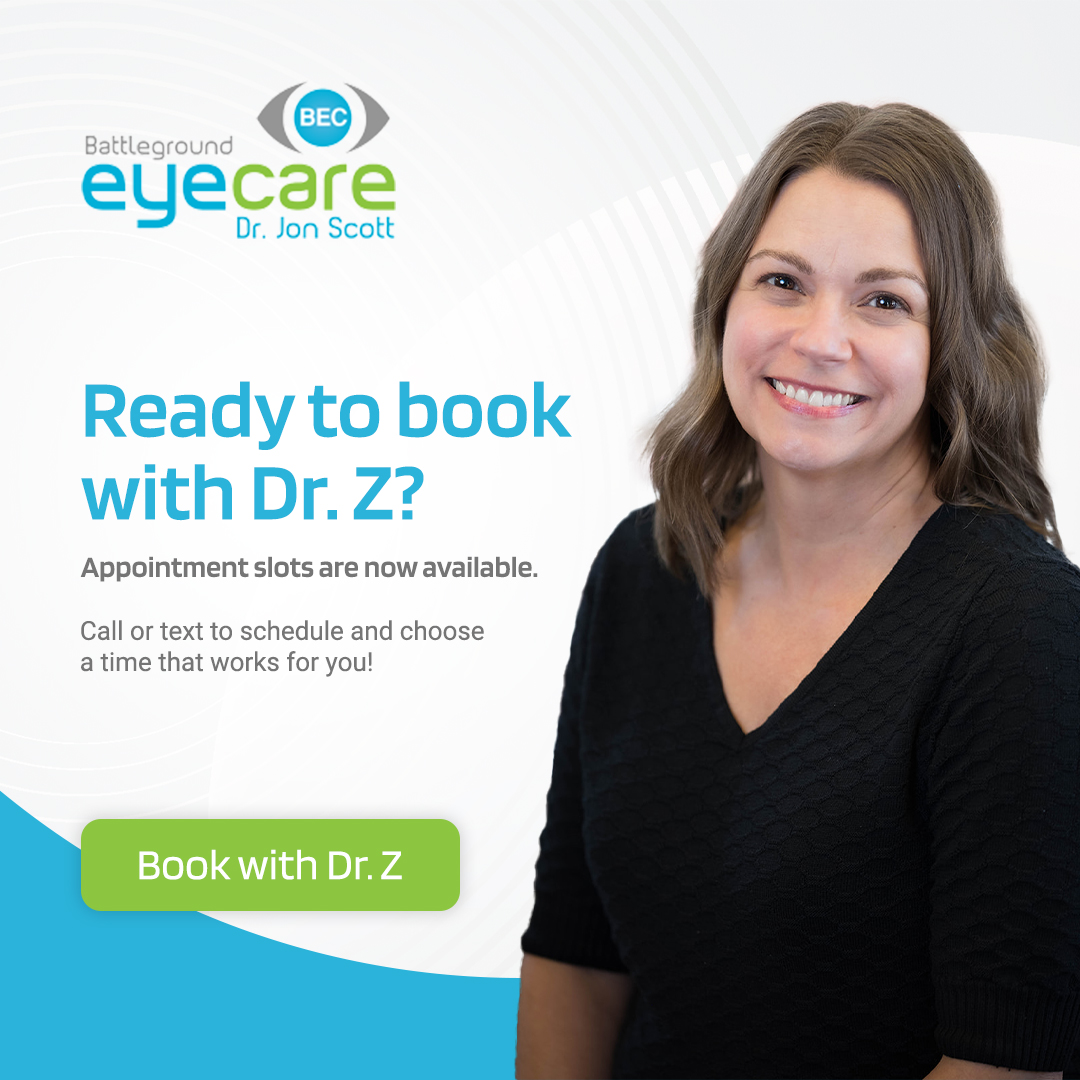
Whether you have been wearing prescription glasses or it’s the first time you’ll need corrective lenses, you will need a contact lens exam in addition to the routine comprehensive eye examination. The prescription for contact lenses is very different from that of glasses. Your eye doctor at Battleground Eye Care will help you to find the right type of contact lens to suit your needs. Here is what you should expect from your contact lens exam.
Your contact lens exam follows your comprehensive eye exam
To wear contact lenses comfortably and without issues, your eyes need to be in good health. To ensure that you are a suitable candidate for contact lenses you will need a comprehensive eye exam. It is recommended for everyone, irrespective of age, to assess the overall condition and health of the eyes. It can detect sight-threatening conditions such as cataracts, glaucoma, macular degeneration, as well as any abnormalities of the cornea that may affect your ability to wear contact lenses. The earlier problems are detected, the sooner they can be treated. This may need to happen before you can wear contact lenses.
Visual acuity test
An eye doctor will ask you to read a series of numbers and letters from a chart to determine what prescription you require. Contact lenses are worn directly on the eye as opposed to the lenses in glasses which are a few millimeters away. That is why the prescription for contact lenses differs from that of glasses.
Evaluation of the surface of the cornea
When a contact lens is inserted, it covers the cornea - the domed area at the front of the eye. There is no standard fit as the shape of the cornea varies between patients. To make sure that the contact lenses fit comfortably, and sit in position properly, your eye doctor will measure the curve of your cornea. This is carried out either by using an instrument called a keratometer or by using laser technology. This laser mapping is called corneal topography and produces a 3D image of the surface of the eye. By carrying out these measurements your eye doctor can confidently decide which shape of contact lenses will be best for you.
Measuring distance between pupils
By measuring the distance between pupils, and the distance between pupil and iris on each eye, your eye doctor can ensure that your contact lenses are the right fit and offer optimum vision. This simple exam is usually carried out with a basic ruler or an instrument called a slit-lamp.
Assessment of your tear film
Contact lenses sit directly on a layer of tear film covering the eye. This tear film makes them comfortable to wear and enables the lenses to move around easily when you move your eyes to look around. For people who don’t have enough tear film, it can mean discomfort when wearing regular contacts, with stiff movement and soreness being potential ongoing issues. By measuring your tear film with a small piece of paper inserted into the lower eyelid and seeing how quickly it becomes moist, your eye doctor can assess what lens is best suited for you, including options for people who produce a lower level of tear film/suffer from dry eyes.
Fitting the contact lens
Once all the relevant assessments have been done your eye doctor will then decide which lenses are best for you. This will be based on the results of these assessments, and your lifestyle and personal requirements. Initially, they will give you a neutral-prescription pair to try, just to see how you feel with them and to make sure that you can insert and remove them easily. Once you and your eye doctor are happy, the lenses in the correct prescription will be ordered. Don’t worry if you need to try a few different pairs to find your perfect fit, this is quite normal.
For more information regarding contact lens exams, visit Battleground Eye Care at our office in Greensboro, North Carolina. You can also call (336) 564-6800 today to book an appointment.







